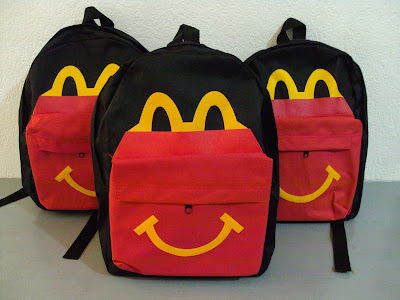EcoWaste Coalition Warns Consumers vs. Mercury, Lead and Arsenic in Some Lipsticks
(Lipsticks with arsenic, lead and mercury levels above the ASEAN Cosmetics Directive's limits.)
An environmental and health watchdog has cautioned the public against secret chemicals lurking in lipsticks that consumers, particularly women, fondly use to have rosy, luscious and alluring lips.
Based on the chemical analysis conducted by the EcoWaste Coalition on 45 samples of lipsticks representing 22 brands, 13 (29%) were found to have trace amounts of hazardous chemical ingredients and impurities that exceeded the limits of 5 parts per million (ppm) for arsenic, 20 ppm for lead and 1 ppm for mercury under the ASEAN Cosmetics Directive.
“Arsenic, lead and mercury are some of the chemicals of high concern that should be eliminated from usage, especially in consumer products, to prevent and reduce their adverse effects to human health and the environment,” said Aileen Lucero, Acting National Coordinator, EcoWaste Coalition.
“Pregnant or lactating women may expose developing foetuses and infants to the risk of toxic metals poisoning when they use these tainted products,” she warned.
Lucero lamented that babies are born pre-polluted as indicated by studies showing nearly 300 contaminants in the umbilical cord blood of newborn babies, including agricultural and industrial toxins, waste incineration by-products and chemicals commonly used in cosmetics, personal care and household products.
The samples, costing P8-P50 were purchased on August 9 and 10 from retailers in Quiapo, Manila, including Carriedo Center, G2 Beauty Products, Isetann Department Store, Kafen Beauty Shop and Manila City Plaza, and analyzed using a portable X-Ray Fluorescence (XRF) spectrometer.
Arsenic was detected in 34 samples with seven lipsticks exceeding the 5 ppm limit: Baolishi #20 (yellow canister) had 386 ppm; Baolishi #20 (green canister), 343 ppm; Baolishi #8, 211 ppm; Shijing #39, 6.9 ppm; Ling Mei #12, 6.2 ppm; Miss Beauty #11 with Vitamin C, 6.1 ppm; and Baolishi #25, 5.9 ppm.
Lead above the 20 ppm limit was found in four products: Baolishi #20 (yellow canister) had 16,700 ppm; Baolishi #20 (green canister), 13,900 ppm; Baolishi #8, 6,324 ppm; and Baolishi #37, 126 ppm.
Mercury higher than the 1 ppm limit was discovered in eight samples: Baolishi #20 (yellow canister) had 343 ppm; Ling Mei #12, 180 ppm; Luoys Paris #5, 61.4 ppm; Baolishi #20 (green canister), 51 ppm; Popa Italy 3 in 1, 40.2 ppm; L’Oreal #209 (presumably counterfeit), 5.3 ppm; Heng Fang #8, 5.1 ppm; and Miss Beauty #6, 3.7 ppm.
Moreover, Baolishi #25 had 2,395 ppm of cadmium, while barium in the range of 590 ppm to 16,000 ppm was detected in 33 samples.
Chromium was likewise detected in seven samples from 23 ppm to 3,523 ppm, as well as selenium in five samples from 5.7 ppm to 208 ppm.
The EcoWaste Coalition emphasized that cosmetics manufacturers must ensure that their products do not present any risk to consumer health, including the health of the unborn babies, and that toxic metals and other chemicals of concern should be replaced with non-hazardous substitutes in line with the precautionary and preventive principles.
Exposures to toxic metals, the group warned, have been linked to number of serious health problems such as reproductive defects, developmental maladies, neurological and behavioral difficulties, endocrine disorders and cancer.
In addition, the group asked manufacturers to respect the consumer right to information by fully disclosing their product ingredients as well as impurities on the labels.
The group also urged the government to work for the revision of the ASEAN’s limits for heavy metals in cosmetics to provide a higher level of protection to vulnerable groups such as children and women of child-bearing age.
For instance, revising the 20 ppm lead limit in cosmetics to 0.1 ppm – the US FDA’s maximum lead level in candy – will be a wise move since lipstick may be ingested by curious and playful children.
“This will further hammer home the point that cosmetics should be safe from toxic metals and other contaminants and that manufacturers should switch to clean production,” Lucero said.
-end-
Reference:
http://www.fda.gov.ph/industry-corner/downloadables/197-asean-cosmetic-harmonization(please click “ASEAN Heavy Metal Limit”)
http://scienceinthetriangle.org/2010/09/10-americans-industrial-toxins-found-in-umbilical-cord-blood/
http://www.scientificamerican.com/article.cfm?id=newborn-babies-chemicals-exposure-bpa
http://chemicalwatch.com/15459/ngo-finds-137-chemicals-in-umbilical-cord-blood
http://www.fda.gov/Food/FoodborneIllnessContaminants/Metals/ucm172050.htm






Comments